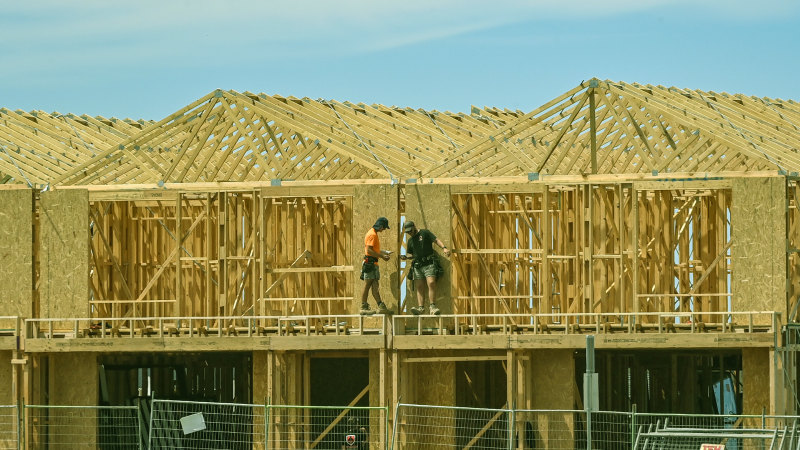
A radical proposal to allow three-storey apartments and townhouses across Australia’s capital cities could deliver 67,000 additional homes annually, potentially reducing rents and giving young people a chance to live closer to central business districts (CBDs). This ambitious plan, put forward by the independent Grattan Institute think tank, suggests a significant overhaul of current planning regulations.
The Grattan Institute estimates that if property owners in Melbourne were permitted to build three-storey townhouses and apartments without needing specialist planning permits, the city could see an additional 431,000 homes constructed within 15 kilometers of the city center. In Sydney, the potential is even greater, with up to one million new homes possible if planning rules are reformed.
Transforming Urban Landscapes
The proposal includes granting default permission for larger apartment blocks of six storeys or more around major transit centers like railway stations and key commercial hubs. This would disrupt existing regulations that currently require developers to navigate complex state and local council planning laws.
Brendan Coates, the housing program director at the Grattan Institute, emphasized the transformative impact such changes could have on every capital city. “The equation is simple: If we build more homes where people most want to live, housing will be cheaper and our cities will be wealthier, healthier and more vibrant,” Coates stated.
Australia needs a housing policy revolution.
Economic and Environmental Benefits
Coates estimates that the proposed changes could increase new housing construction by 67,000 homes annually, beyond the current 200,000. This increase could reduce rents by 12% over a decade and decrease the median home price, currently at $870,000, by $100,000. Additionally, the plan could boost Australia’s GDP by $25 billion annually and reduce greenhouse gas emissions, while enabling more people to live closer to essential services and employment opportunities.
Currently, a significant portion of land in major Australian cities is zoned for low-density housing. In Sydney and Melbourne, 80% and 87% of land respectively, within 30 kilometers of the city center, is zoned for housing of three storeys or fewer. In Brisbane, Perth, and Adelaide, about three-quarters of land is zoned for two storeys or fewer. This low-density zoning contributes to some of the lowest population densities among developed nations’ cities with populations over one million.
Challenges and Criticisms
The Grattan Institute’s report highlights the barriers posed by existing planning restrictions, which it claims are limiting young people’s ability to live near job opportunities. Between 2001 and 2024, several inner-city suburbs in Sydney and Melbourne saw a decline in residents under 30. From 2016 to 2021, while 35,000 people aged 30 to 40 moved into Sydney, 70,000 left, primarily in search of affordable housing.
Heritage listings further complicate new home construction. In Melbourne, nearly 30% of residential land within 10 kilometers of the city center has a heritage overlay. Legal challenges also contribute to delays and cost increases, with the Victorian Civil and Administrative Tribunal overturning 49% of council rejections of new home developments.
Applicants waited an average of 193 days for a decision when initial rejections were overturned.
Government Response and Market Trends
While the New South Wales and Victorian governments have initiated major planning reforms, the Grattan Institute argues these efforts fall short of the necessary increase in affordable housing in prime locations. Recent data from Cotality indicates that home values nationally rose by 1.1% in October, marking the strongest monthly gain since mid-2023. Over the past year, values have increased by 6.1%.
This rise has sparked criticism from the Coalition and some property analysts, who attribute the increase to the government’s expanded 5% deposit scheme for first-time buyers. Opposition housing spokesman Andrew Bragg accused the government of driving up prices by failing to build sufficient houses while expanding the deposit scheme.
Data shows 5,778 guarantees under the 5% deposit scheme were issued last month, up by 1,878 from the previous year.
Insurance and Natural Disasters
Another factor affecting housing costs is insurance. A recent roundtable in Canberra, involving insurers, banks, and governments, discussed the need to build more homes without increasing their risk to natural disasters like bushfires and floods. Insurance costs have risen at twice the rate of inflation, with residents in disaster-prone areas struggling to afford coverage.
Suncorp CEO Steve Johnston stressed the importance of not placing new homes in high-risk areas, which would make insurance prohibitively expensive. As Australia grapples with housing affordability and availability, the Grattan Institute’s proposal presents a bold vision for the future of urban living in the nation’s capital cities.







